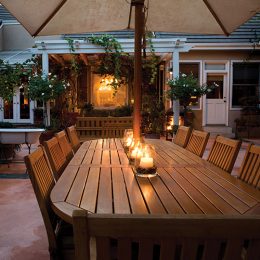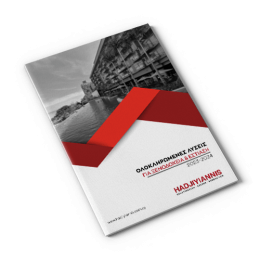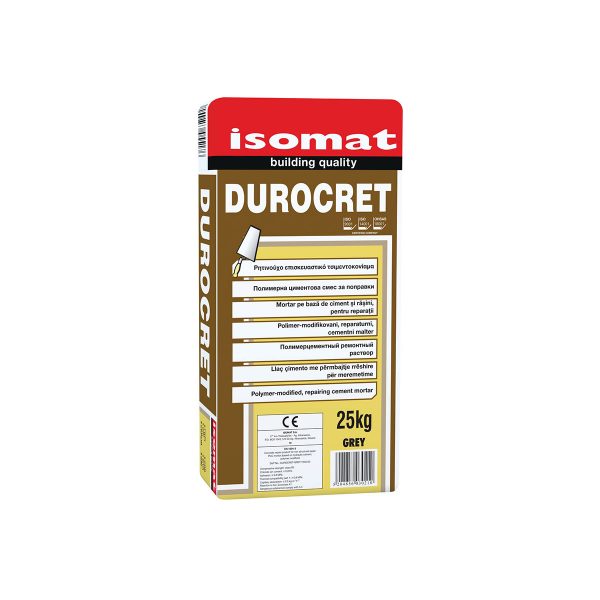Any local restoration of the slopes is done with the resin cement mortar DUROCRET. If it is necessary to create slopes in the whole roof, the SCREED-100 light cement mortar is used. After 7 days, the sealing works can begin.
1. The substrate is well cleaned of dust, loose materials, etc.

2. Then the substrate is getting wetting, without the formation of stagnant water.

3. Prepare AQUAMAT-FLEX, by adding the A-component (cement) to the B-component (elasticizer) and mixing at the same time.

4. The first application of AQUAMAT-FLEX is done with a brush, in strips of 1m width. The application extends to the vertical elements by 15-20cm.

5. In the fresh layer of AQUAMAT-FLEX is placed and integrated polyester fabric (POLYESTER FABRIC 30GR) width 1m.

6. The application of AQUAMAT-FLEX continues on the entire surface of the roof, always in strips 1m wide.
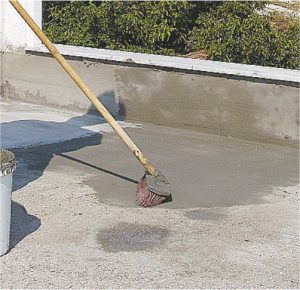
7. The strips of polyester fabric should overlap by 10cm.

8. The first layer reinforced with polyester fabric, after drying, is covered by a second application with AQUAMAT-FLEX.
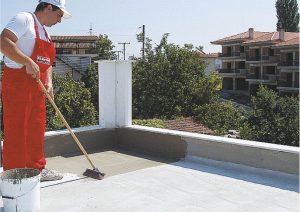
9. Next is another third layer with AQUAMAT-FLEX, crosswise with the previous one and if it has dried. The thickness of each layer should not exceed 1mm. Alternatively, the ready-to-use ISOFLEX PU-510 in two layers can be used instead of AQUAMAT-FLEX.

10. Extruded polystyrene boards are placed on the waterproofing and after it has dried, by simple deposition.

11. The installation of geotextile or plastic burlap follows.

12. Finally, paving slabs or gravel (layer thickness 6-8cm) are placed to protect the waterproofing and thermal insulation from the sun and wind. At the same time, the good walkability of the roof is achieved.





